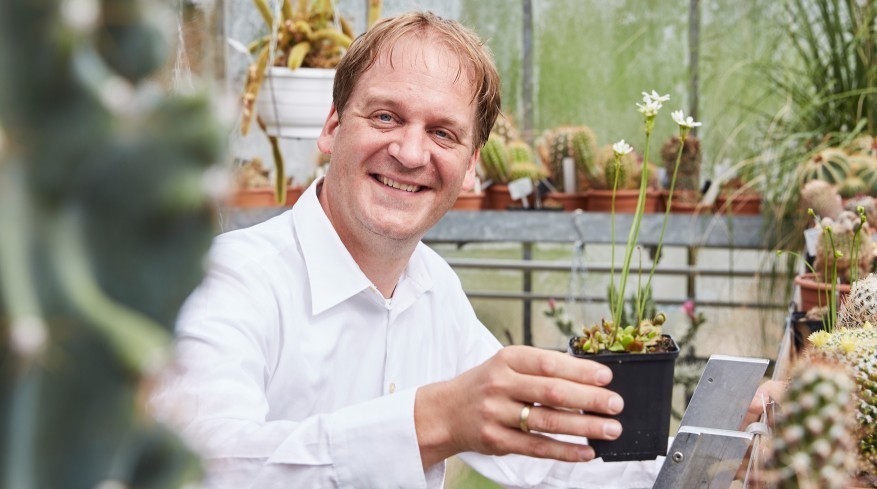The Venus flytrap – an inspiration for technology
Advanced Science: researchers investigate movements when leaves reopen
2022/06/12
The rapid speed at which the carnivorous Venus flytrap catches its prey is legendary. What is less well known is that Dionaea muscipula is also capable of a variety of other forms of movement. In a study, a team at the Universities of Darmstadt, Freiburg and Stuttgart studied the opening – i.e. the “re-setting” – of the traps. The results are also interesting for technical disciplines such as mechanical engineering or soft robotics, and have just been published in the renowned journal “Advanced Science”.

The Venus flytrap is a specially protected plant species that originated from North America. If any prey animals such as flies, ants or spiders touch the leaves, they instantly snap shut. The prey is stuck – and is digested. Snapping lasts only about 100 milliseconds, one of the fastest movements in the plant kingdom, and has been extensively studied scientifically. A team led by Dr. Simon Poppinga from the Botanical Garden at TU Darmstadt, Prof. Thomas Speck and Dr. Grazyna Durak from the Botanic Garden and the cluster of excellence Living, Adaptive and Energy-autonomous Materials Systems (livMatS) at the University of Freiburg, and Prof. Manfred Bischoff from the University of Stuttgart has now addressed the hitherto little-researched question of how the traps reopen and prepare for new prey.
